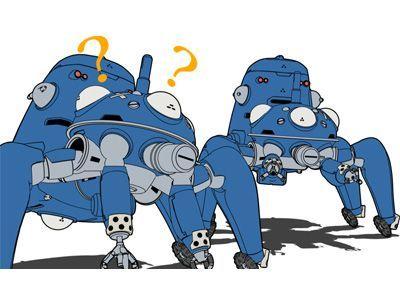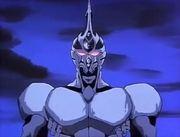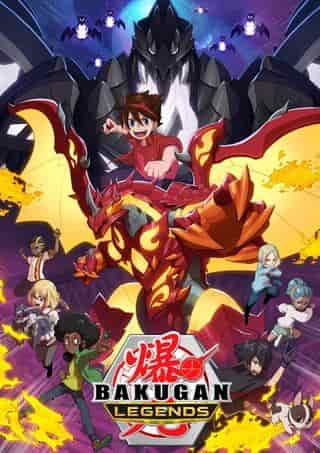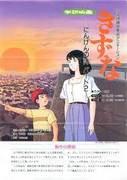The Story of Anne Frank: Review and impressions of the moving anime based on the true story
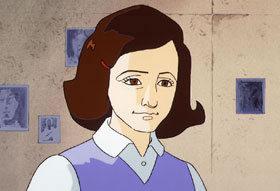
The Anne Frank Story - History and Emotion"The Story of Anne Frank," which was broadcast as a television anime series on September 28, 1979, is a moving story that depicts the tragedy of World War II, yet also finds hope and courage in the midst of it. This anime is based on Anne Frank's "The Diary of Anne Frank" and was produced to commemorate the 50th anniversary of her birth. It was directed by Eiji Okabe and produced by Nippon Animation and Asahi Broadcasting Corporation, and aired in a format of one 82-minute episode. storyThe story begins with Anne Frank, the daughter of a businessman who lived a peaceful life in Frankfurt, Germany. However, due to the Nazi policy of expelling the Jews, Anne and her family were forced to emigrate to Amsterdam, Netherlands. Furthermore, when Anne's older sister Margot was ordered to report to a concentration camp, the family was forced to live in hiding. Despite living in fear of the Gestapo and air raids, Anne kept a diary, wrote fairy tales, and developed a deep love for Peter, who was in the same situation. However, the Gestapo reached their hiding place, and Anne was sent to a concentration camp, losing her life at just 15 years old. Commentary"The Anne Frank Story" depicts the journey of Anne Frank, a Jewish girl who tried to live her life to the fullest while hiding out from the Nazis in a hiding place in Amsterdam, Netherlands, during World War II, and her family. Based on interviews with Anne's biological father, Otto, the film also includes ample footage of existing Nazi concentration camps and live-action scenes of the Dutch landscape. Although this animation is based on Anne's diary, it has a unique style that combines realistic footage and animation, deeply moving viewers. castThe role of Anne is played by Mariko Fuji, the role of Otto by Toru Abe, the role of Peter by Koji Mori, the role of Margot by Miyuki Ueda, and the role of Edith by Noriko Nakamura. Other than that, the cast of voice actors is impressive, including Koichi Kitamura as Vandean, Naoko Kyoda as Mrs. Vandean, Eisuke Yoda as Dussel, and Nako Egawa as Miep. The narrator is Fumie Kashiyama, who carefully guides the progress of the story. Main StaffBased on the novel "The Diary of Anne Frank" by Anne Frank, the film is produced by Koichi Motohashi, production manager Mitsuru Takakuwa, planning by Shoji Sato, music by Koichi Sakata, direction by Eiji Okabe, producer Ihiro Ooba, script by Ryuzo Nakanishi, character design and animation director Isamu Kumada, art director Shichiro Kobayashi, cinematographer Toru Ogihara, and sound director Yasuo Urakami. The opening theme "There's a Tomorrow There's Love" and the ending theme "The Girl Who Became a Seagull" have lyrics by Tokiko Iwatani, music and arrangement by Koichi Sakata, and singing by Segal. Main CharactersAnne was a Jewish girl born in 1929 who dreamed of becoming an actress or a writer, but became a victim of Nazi policies and died at the age of 15. Margot was Anne's older sister, and the two sisters were very close. Otto was Anne's father, and was the only member of the family who survived until after the war and published "The Diary of Anne Frank." Edith was Anne's mother, and had a strict personality. Peter was a boy that Anne met in a hideout in Amsterdam, and who became romantically involved with her. Theme songs and musicThe opening theme "Ai ga aru ashita ga aru" (There's a tomorrow where love is) and the ending theme "Kamome ni natta shojo" (The girl who became a seagull) were written by Tokiko Iwatani, composed and arranged by Koichi Sakata, and sung by Segal. These songs have beautiful melodies that symbolize Anne's hope and tragedy, and will resonate deeply with viewers. Evaluation and ImpressionsAlthough "The Story of Anne Frank" is an animation based on historical fact, the hope and courage of Anne depicted in the film deeply moves viewers. In particular, the realistic depiction based on Anne's diary and the expressive power unique to animation combine to create a unique charm not found in other works. The stellar voice cast and beautiful music also add to the moving impact of this work. This film is a must-see, both to ensure we do not forget the tragedies of World War II and to convey Anne's hope and courage to future generations. It is especially recommended for those who are interested in history and war, and those who like moving stories. Even those who have read Anne's diary before will be moved anew by experiencing the story again in animation. Recommended pointsI recommend "The Anne Frank Story" for the following reasons:
Related information"The Story of Anne Frank" was broadcast as a TV anime series, but has since been released on DVD and Blu-ray and is loved by many people. There are also many other works based on Anne's diary and animations depicting World War II. By watching these works together, you can gain a deeper understanding of Anne's story and history. Furthermore, this work, which was created through interviews with the Anne Frank Foundation and Otto Frank, deeply moves viewers with its unique style that combines realistic depictions based on historical facts with the expressive power that only animation can provide. In particular, the moving story of Anne's hope and courage resonates deeply with viewers. Although "The Story of Anne Frank" is an animation based on historical fact, the hope and courage of Anne depicted in the film deeply moves viewers. In particular, the realistic depiction based on Anne's diary and the expressive power unique to animation combine to create a unique charm not found in other works. The stellar voice cast and beautiful music also add to the moving impact of this work. This film is a must-see, both to ensure we do not forget the tragedies of World War II and to convey Anne's hope and courage to future generations. It is especially recommended for those who are interested in history and war, and those who like moving stories. Even those who have read Anne's diary before will be moved anew by experiencing the story again in animation. I recommend "The Anne Frank Story" for the following reasons:
"The Story of Anne Frank" was broadcast as a TV anime series, but has since been released on DVD and Blu-ray and is loved by many people. There are also many other works based on Anne's diary and animations depicting World War II. By watching these works together, you can gain a deeper understanding of Anne's story and history. Furthermore, this work, which was created through interviews with the Anne Frank Foundation and Otto Frank, deeply moves viewers with its unique style that combines realistic depictions based on historical facts with the expressive power of animation. In particular, the moving story of Anne's hope and courage resonates deeply with viewers. Although "The Story of Anne Frank" is an animation based on historical fact, the hope and courage of Anne depicted in the film deeply moves viewers. In particular, the realistic depiction based on Anne's diary and the expressive power unique to animation combine to create a unique charm not found in other works. The stellar voice cast and beautiful music also add to the moving impact of this work. This film is a must-see, both to ensure we do not forget the tragedies of World War II and to convey Anne's hope and courage to future generations. It is especially recommended for those who are interested in history and war, and those who like moving stories. Even those who have read Anne's diary before will be moved anew by experiencing the story again in animation. I recommend "The Anne Frank Story" for the following reasons:
"The Story of Anne Frank" was broadcast as a TV anime series, but has since been released on DVD and Blu-ray and is loved by many people. There are also many other works based on Anne's diary and animations depicting World War II. By watching these works together, you can gain a deeper understanding of Anne's story and history. Furthermore, this work, which was created through interviews with the Anne Frank Foundation and Otto Frank, deeply moves viewers with its unique style that combines realistic depictions based on historical facts with the expressive power that only animation can provide. In particular, the moving story of Anne's hope and courage resonates deeply with viewers. Although "The Story of Anne Frank" is an animation based on historical fact, the hope and courage of Anne depicted in the film deeply moves viewers. In particular, the realistic depiction based on Anne's diary and the expressive power unique to animation combine to create a unique charm not found in other works. The stellar voice cast and beautiful music also add to the moving impact of this work. This film is a must-see, both to ensure we do not forget the tragedies of World War II and to convey Anne's hope and courage to future generations. It is especially recommended for those who are interested in history and war, and those who like moving stories. Even those who have read Anne's diary before will be moved anew by experiencing the story again in animation. |
<<: "Autumn Leaves": Reevaluating the moving song of Minna-Uta
Recommend
Stephen Chow's 60th birthday girl Lin Yun celebrates her boss' birthday
Today (June 22) is the 60th birthday of the famou...
Valkyria Chronicles Review: A masterpiece anime that combines strategy and storytelling
Valkyria Chronicles - A flower of hope blooming a...
"X-Men: New Mutants" reveals new poster with horror elements
On January 26, the "X-Men" series spin-...
"May Song" Review: What is the appeal of Minna no Uta?
The appeal and evaluation of May Song - Gogatsuno...
The new PV and voice actors of the animation "Chainsaw Man" are announced and will be broadcast in October
Adapted from the work of Fujimoto Itsuki, the TV ...
The sequel to the classic sci-fi film "Tron: Legacy" adds two new actors
The third installment in Disney's resurrected...
The appeal and evaluation of Mobile Suit Gundam SEED: A deep look at the first series
Mobile Suit Gundam SEED - The path to peace found...
How to make watching professional baseball 10 times more enjoyable - A thorough explanation of practical viewing techniques
How to Enjoy Watching Professional Baseball 10 Ti...
Marvel President says that "Doctor Strange 2" will have new characters that no one can guess
According to foreign media reports recently, Marv...
A senior player showed off his hot-bead painting of Pokémon, which amazed Junichi Masuda and praised his patience, perseverance and faith.
Loyal fans can't just shout, they have to tak...
Netflix's The Witcher Season 3 just started filming and the producers are already planning Season 4
Although filming of the third season of Netflix&#...
Brazilian man cuts off nose and splits tongue to resemble orc in Lord of the Rings
According to CTV News in Canada today, a Brazilia...
The latest trailer for the second season of the classic TV animation "World Trigger" will be broadcast on January 9, 2021
The new second season of the fantasy manga "...
Will Smith's Bad Boys 4 will be released in summer 2024
As a representative work of Hollywood black comed...
Evaluation and impressions of the unaired episodes of Teekyu Season 5
A comprehensive review and recommendation of &quo...

